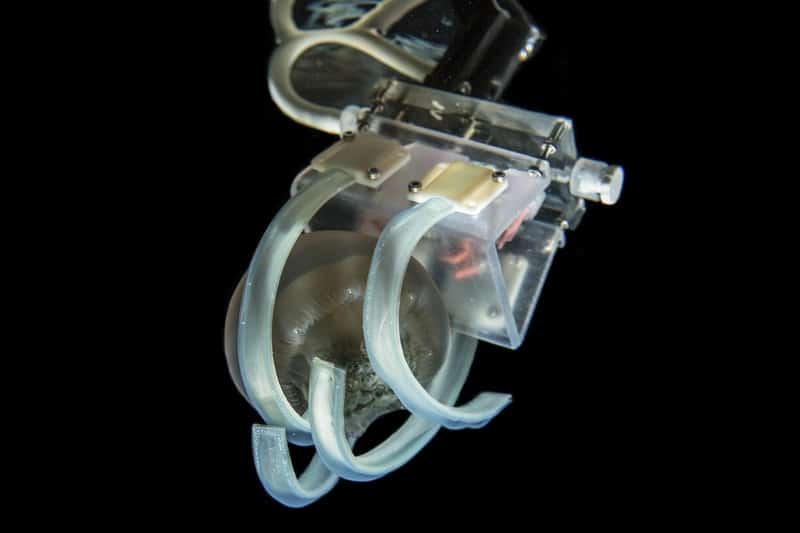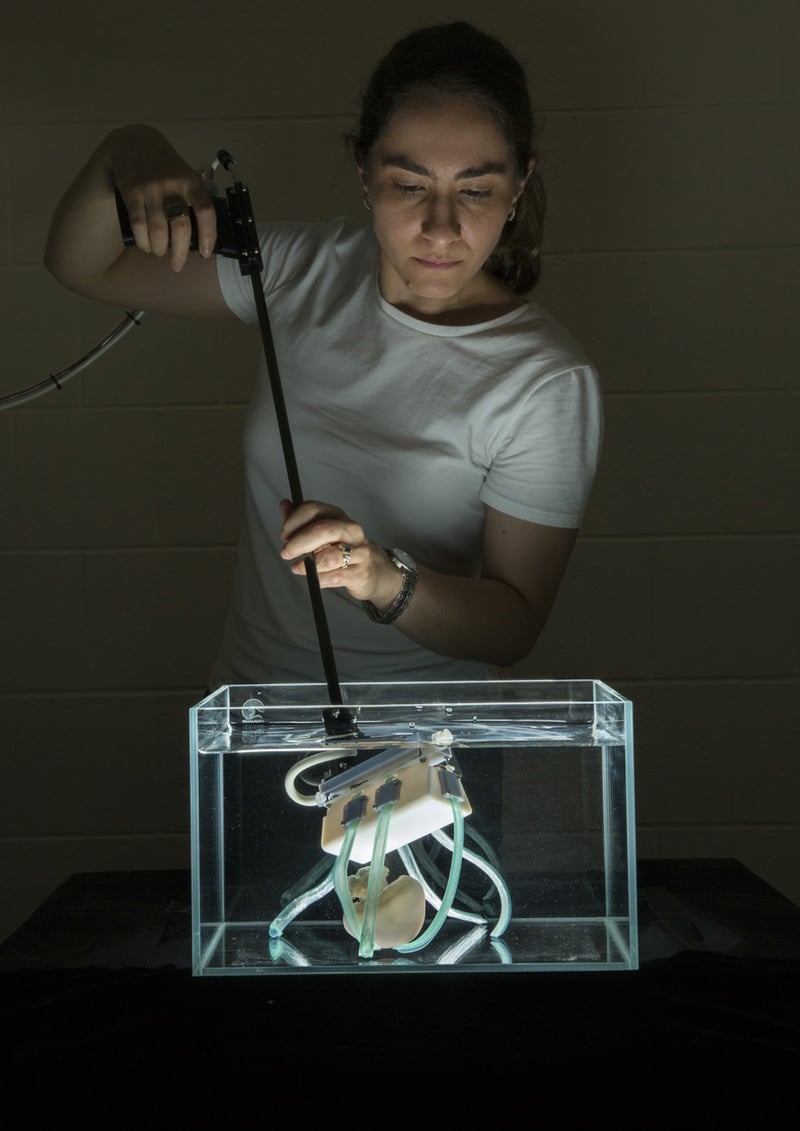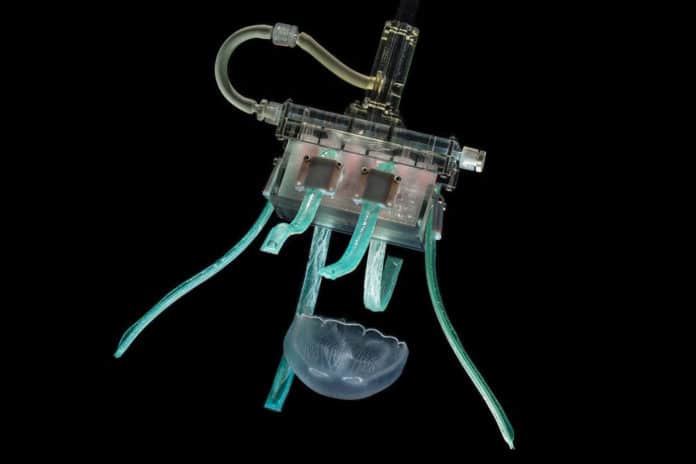Jellyfish are about 90% water, and quite fragile, which makes them very difficult to study. Robots’ heavy grip might not be a problem when they move boxes or delivering a parcel, but it can damage marine animals like jellyfish and other delicate creatures. Also, most other underwater tools marine biologists currently use to capture jellyfish are often shred jellyfish to pieces when they attempt to capture them.
A newly developed ultra-soft robotic hand-like gripper might be a great solution for this problem. Developed by researchers at Harvard’s Wyss Institute for Biologically Inspired Engineering, and Baruch College at CUNY, the underwater gripper uses its fettuccini-like hydraulic “fingers” to catch and release jellyfish and other delicate creatures without causing them harm.

The new ultra-soft gripper consists of six fingers made out of thin, flat strips of silicone with a hollow channel inside bonded to a layer of flexible but stiffer polymer nanofibers. These fingers are attached to a rectangular, 3D-printed plastic “palm” that pumps water into them.
When these channels are filled, each one curls with an extremely low amount of pressure – about 0.0455 kPA, that is less than one-tenth of the pressure that a human eyelid exerts on the eye and over 22 times less than marine manipulators.

Researchers first tested this robotic silicone gripper – fitted to a specially created hand-held device- to grasp an artificial silicone jellyfish in a tank of water. This helps them to study the gripper’s basic functions, as well as its precision, positioning, the optimum angle, and speed at which to capture a jellyfish.
After its successful gripping on an artificial jellyfish, the team then moved on to the real thing at the New England Aquarium, where they grabbed and released golf-ball-sized swimming moon jellies, jelly blubbers and spotted jellies. During the test, the jellyfish showed no signs of stress, and the grippers were able to open and close about 100 times before they showed signs of wear and tear.
The new technology could allow scientists to safely interact with these delicate creatures while studying or collecting data and could also advance other soft robots.
“Soft robotics is an ideal solution to long-standing problems like this one across a wide variety of fields because it combines the programmability and robustness of traditional robots with unprecedented gentleness thanks to the flexible materials used,” Rob Wood, co-lead of the Wyss Institute’s Bioinspired Soft Robotics Platform said in a press release.
